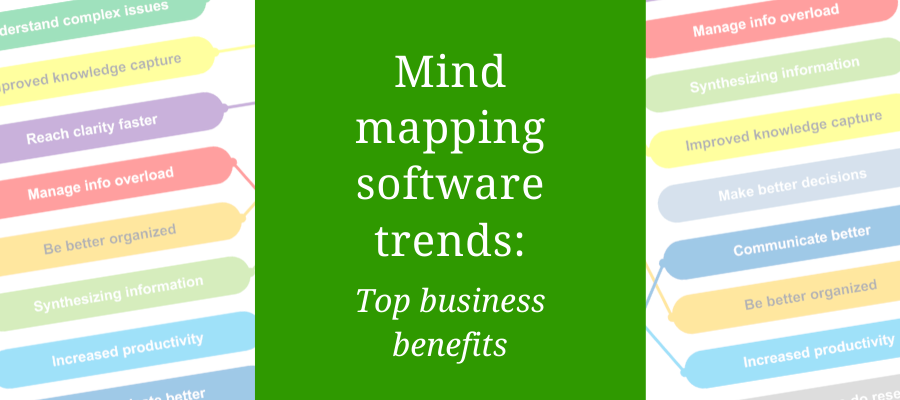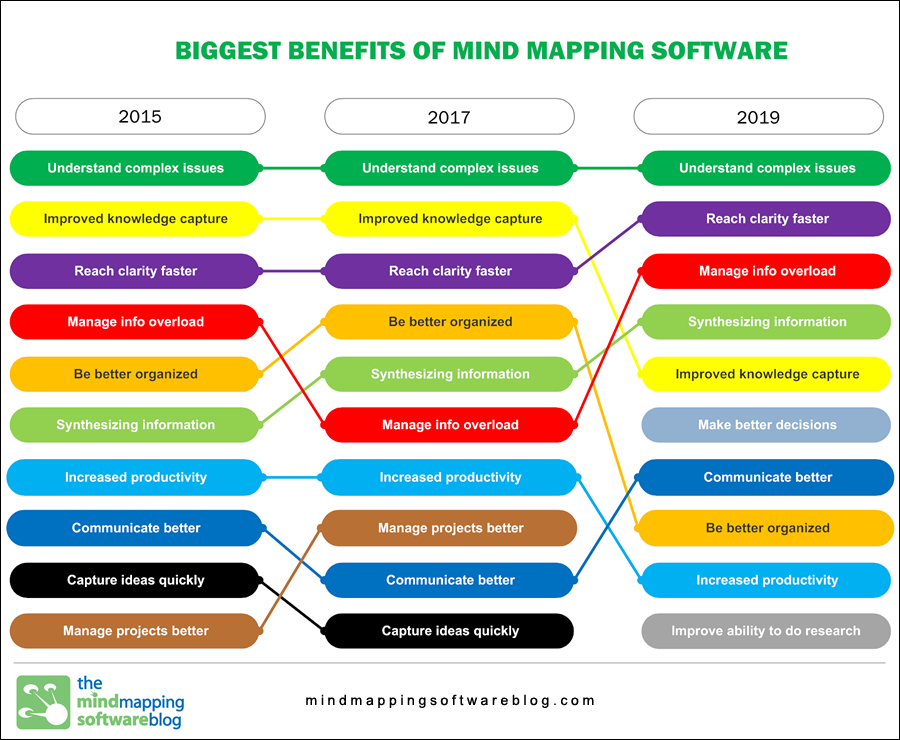
Mind mapping software provides business people with some incredible benefits. That’s been proven by nearly a decade of user surveys by yours truly. But how have its benefits evolved over time? Which advantages have remained consistent? Which have grown and declined?
To get the answers to these questions, I created an infographic that plots out the top 10 benefits of mind mapping software over the last 3 surveys – conducted in 2019, 2017 and 2015. I then color-coded them and joined them with connectors, to make it easier to see the “vector” of each one. The results can be clearly seen below:

(click image for larger version)
Helping you understand complex issues more easily has remained steadfastly in the number one position during the last 4 years – not surprising because it provides this benefit no matter what business application you’re using it for.
Number two, improved knowledge capture, fell significantly to number five in 2019.
Reaching clarity faster appears to be growing in importance. It ranked number three in the 2015 and 2017 surveys but has jumped to number two in the 2019 research. In my opinion, this is closely related to understanding complex business issues. Every knowledge worker is faced with information overload today. We must deal with unprecedented amounts of uncertainty and ambiguity. We need a tool that can help us to organize the information, knowledge and data we have, figure out what’s missing and come to a clear sense of what we need to do with it.
Likewise, synthesizing information is steadily growing in importance, from number six in 2015 to number five in 2017 and number four in 2019. This benefit speaks to the ability to discern patterns in your information, connect related ideas and combine disparate information into more cohesive collections. It often involves summarizing information, too. Because mind maps present information in skeletal form, they are ideally suited to synthesizing information.
What surprises you about this chart?

Leave a Reply